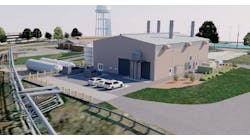January 26, 2012
Energy efficiency in the US is much light and little heat – literally. Government policy pays a great deal of attention to saving electricity, but focuses little on the thermal energy we waste.
“Policy is electricity-centric in the US. Unless you are making kilowatts, the most efficient investments are off the radar,” said Rob Thornton, president of the International District Energy Association (IDEA), who I recently interviewed while writing this year’s edition of Pennwell’s US Guide to Combined Heat and Power Companies.
We throw away a lot of the heat. Power plants, for example, create heat as a byproduct of generation. Rather than reusing this thermal energy, we often let it dissipate into the air. As a result, we waste more energy than Japan uses for everything, according to Amory Lovins, author of “Reinventing Fire: Bold Business Solutions for the New Energy Era.”
There is good news, however. Thornton and others I interviewed see a growing change in Washington’s attitude about combined heat and power (CHP), district energy, and other efficient methods of using thermal energy. Movers and shakers are becoming more aware of these energy alternatives. In addition, states are increasingly incorporating heat efficiency into clean energy portfolio standards.
“Finally, after all of these years, combined heat and power has become a hot topic in the political community,” said R. Neal Elliott, associate director for research at the American Council for an Energy-Efficient Economy.
In fact, Congress is looking to improve heat efficiency in its own backyard. The Capitol Building, which already has a district energy system, plans to incorporate an 18-MW CHP system (also called cogeneration). The system is part of long-term energy plan that attempts to reduce costs and improve the efficiency and the environmental footprint of the Capitol. The CHP system will provide 200,000 lb/hour of steam to heat Congressional buildings. The steam comes from heat produced while generating the electricity, so the plant gets a twofer from the fuel. The CHP system will reduce building energy use 7.1%, according to the first quarter 2012 issue of IDEA’s District Energy magazine.
Barry Sanders, president and chief operating officer of American DG Energy, says that the smart energy movement needs to embrace heat, not just electricity, if the US is to achieve its energy independence goals.
“A gaping hole exists in the nation’s discussion about smart energy. Most of the talk focuses on electric power, and neglects thermal applications. Yet, we use a great deal of energy to heat and cool buildings, heat and chill water, and undertake thermal-driven industrial processes,” he wrote in a recent white paper, “Smart Heat: The Next Step in Clean Energy.”
In some parts of the country, we still use a good deal of imported fuel to make heat, at a time when we are trying to shift to domestic supply, Sanders wrote. He points out that oil continues to be the primary residential heating fuel in some of our most highly populated regions, such as the Northeast, the biggest single heating oil market in the US, according to the US Department of energy. And in New York, 10,000 of the city’s largest buildings use residual oil, considered a dirty fuel – 86% of the city’s soot comes from the burning of residual oil, according to New York City’s office of Long-Term Planning and Sustainability.
“By neglecting heat in our smart energy pursuit, we continue to forfeit domestic, efficient and inexpensive fuels in favor of polluting and pricey foreign imports,” Sanders wrote.







